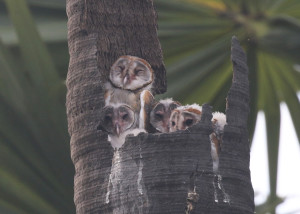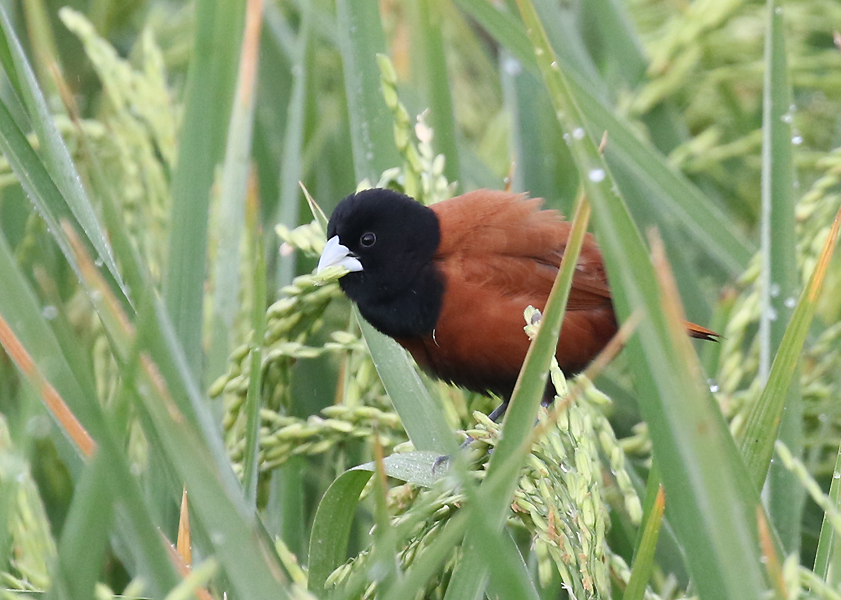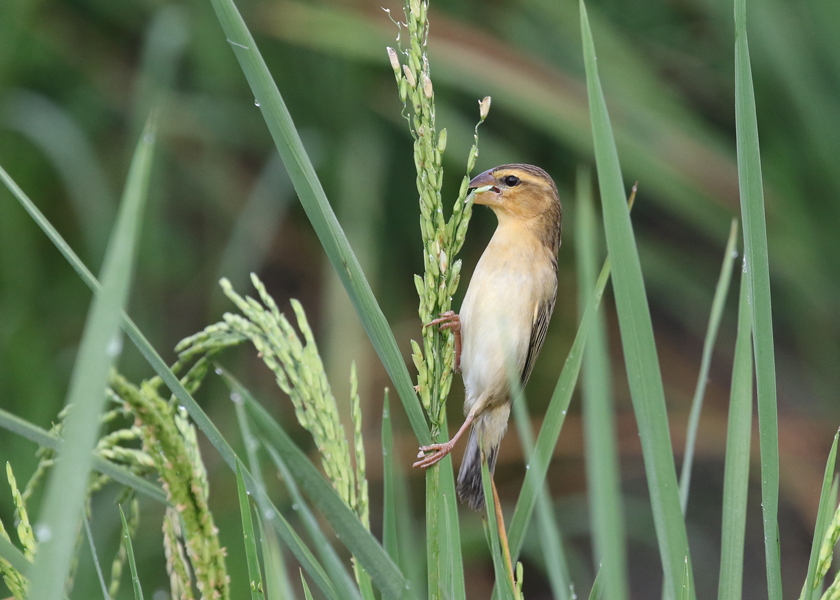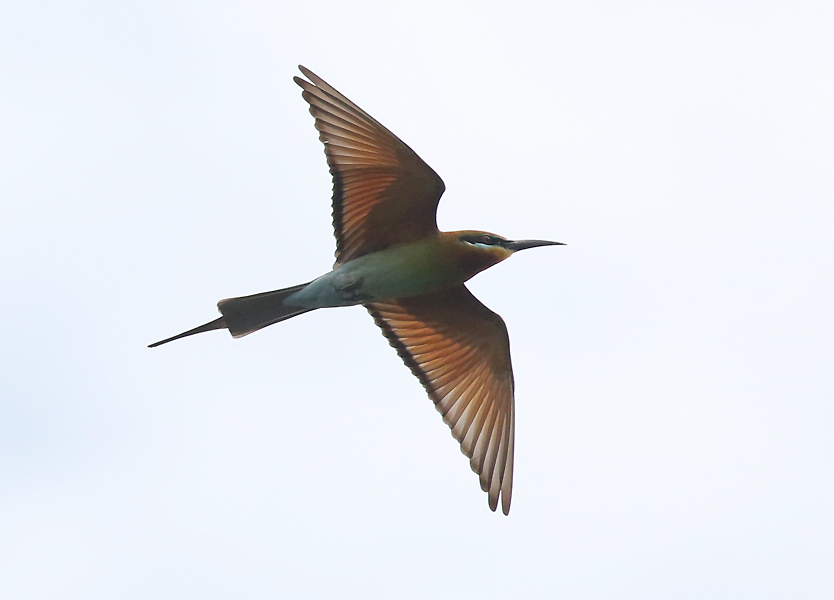
The Central Plains of Thailand are full of rice fields, indeed Thailand is consistently the biggest exporter of rice in the world, but access to many of them can be difficult, requiring walking in hot weather. However, the rice research project in Pathum Thani, on the outskirts of Bangkok, is a perfect place to see and photograph birds of this habitat as it is criss-crossed by a series of tracks that allow birdwatchers to access the whole site. Pathum Thani rice research centre always makes for a nice variety of farmland and wetlands birds and it provides a perfect location to introduce birders to Thailand’s species which is what I found myself doing yesterday morning.
As this location is devoted to rice research, the plots are fairly small and there is almost always a rotation of crops from freshly ploughed and flooded plots through to rice crops ready to be harvested, which means that there is usually a wide variety of birds to be found here. This proved to be the case on this visit and I was able to get a nice set of photographs which I have published here, particularly of a family of Barn Owls.
As you can see these Barn Owls chose to nest in the hollow at the top of a broken palm tree, taking advantage of the fact that there is more or less no rain at all between November and March as well as the fact that there are undoubtedly lots of rice field rats to feed on. I saw several rats run across the tracks through the rice fields during this visit.
I see Barn Owls in Britain but to my knowledge they usually only fledge a small number of chicks, 1-3 perhaps. But this next seemed to have at least five chicks in varying states of development. I can only assume that the climate and superabundance of prey allowed them to provide enough food for a larger brood.
Freshly-planted and flooded rice plots can attract a lot of wading birds as the above photograph illustrates. Big flocks of Black-winged Stilts were in every wet field with smaller numbers of Spotted Redshank, Wood Sandpiper, Little Ringed Plover and a little searching also turned up Common Greenshank, Marsh Sandpiper, Long-toed Stint, Temminck’s Stint and a pair of Greater Painted Snipe.
When you see the length of the legs of Black-winged Stilt it becomes obvious why the word “stilt” is used in their names. Their legs are quite out of proportion to their bodies.
At the other end of the wading bird scale are Long-toed Stints. This tiny shorebird seems to prefer freshwater or slightly saline water in contrast to many wading birds that are frequently found in salt farms of mudflats, so it was no surprise to find a few at Pathum Thani rice fields. We saw these birds next to a Temminck’s Stint and the contrast between the Long-toed Stint’s mostly brownish and detailed plumage with the Temminck’s mostly plain and grey winter plumage was obvious.
Asian Openbill has become one of the commonest birds of wetlands in Thailand so it was entirely expected that we got close up views and plenty of opportunities to photograph these birds. Although I have very many photos of this species it is always hard not to take more, they can be very photogenic. The introduction of a species of snail which is a rice crop pest has resulted in a population explosion of these storks and, of course, they are very welcomed by farmers to whom the storks do a great service of pest-control. Some time in the early 2000s Asian Openbill was blamed for spreading bird flu by the Thai government and a cull was proposed. That absurd policy would have cost the Thai rice industry a stupendous amount of money in the loss of this pest predator and thankfully the proposed cull was abandoned.
A considerable amount of the rice here was netted, presumably to discourage some birds which can be detrimental to rice farming, although with limited success it appeared as many birds had managed to get through gaps in the netting. Species such as weavers, sparrows and munias feed on seed and a rice crop almost ready for harvest can attract large flocks of these birds and probably result in a significant loss of rice grains.
This male Red Avadavat was one of a small group feeding alongside Scaly-breasted Munias and White-rumped Munias, both of which are very common. Less abundant are Chestnut Munia so I was pleased to see small numbers of this very handsome little bird feeding among the more abundant species.
Thailand has three species of weaver birds and we were lucky enough to see all three in a morning of birding here with Asian Golden Weaver being the most numerous by some degree. This is actually a little unusual as Baya Weaver is usually the most common of the three. presumably there is something about the habitat here that favours Asian Golden Weaver.
Even in non-breeding plumage Asian Golden Weaver is easily identified by its huge bill. The upper mandible is an extension of the bird’s crown with no real forehead at all which is not true of the other two weaver species in Thailand.
Not of concern to rice farmers are raptors. In fact they are probably welcome as they target things like rats which can be a problem for farmers. We watched this juvenile gliding back and forwards over the rice crops looking for prey and often being attacked by smaller birds such as Eastern Yellow Wagtail as it passed by. There was no adult male today, one of my favourite of all raptors, but watching this one hunt at close range was still very exciting.
Most of the birds we saw were found by sight but listening for different calls is also a good way to locate birds. In this way we located this male Plaintive Cuckoo, singing away from some trees on the edge of the site. It was some distance away so to get even this photo was a little surprising.
The call of Blue-tailed Bee-eater alerted me to this beautiful, colourful bird but they were easily seen too as they spent time swooping across a pond, catching insects on the wing. The pond contained little, just a couple of Little Grebes, Common Moorhens and a single Lesser Whistling Duck. Watching the Bee-eaters was fun though.
These agile birds were able to snatch flying insects out of the air, I noticed one catching a dragonfly and as they swooped around they performed some remarkable manoeuvres.
The rice research centre at Pathum Thani is very rich in birdlife, with good numbers of birds and a wide variety of species. One of the reasons for this is that it consists of a relatively small area of land divided into small plots, most of which contain rice at a different stage of the growth cycle. This diversity of microhabitats will also contain food items, seed, insects, rodents, all through the year in a relatively stable abundance allowing the birds to feed well. When I was at university I studied Corn Buntings in UK and found that even where adjacent wheat crops had been planted a week or so apart this increased the biodiversity enough to benefit the birds. This effect is multiplied many times over with the large number of small plots at Pathum Thani. I would also imagine that they experiment with different growing regimens too, almost certainly some traditional varieties of rice and some traditional farming methods will be used here alongside more modern techniques and varieties. This all goes to increase biodiversity on the site and the number of birds. I will try to visit again soon.


 January 6th, 2022
January 6th, 2022  Nick
Nick 













 Posted in
Posted in  Tags:
Tags: 










I visited Thailand three years ago but wasn’t able to do any birding. Would love to visit again. Thank you for sharing.
Hope you get the chance to visit again. Thailand is still a calm, tolerant and easy-going place full of great birds.
Always great to follow your adventures Nick hope to meet up with you again one day at RSPB Rainham marsh. Take care.
Regards Paul nesbitt
Nice to know you enjoyed the post Paul. Great birds here but for sure I miss the Thames foreshore at Rainham, Dartford and Higham. Look out for me when I’m next in UK. I’m sure to visit Rainham.